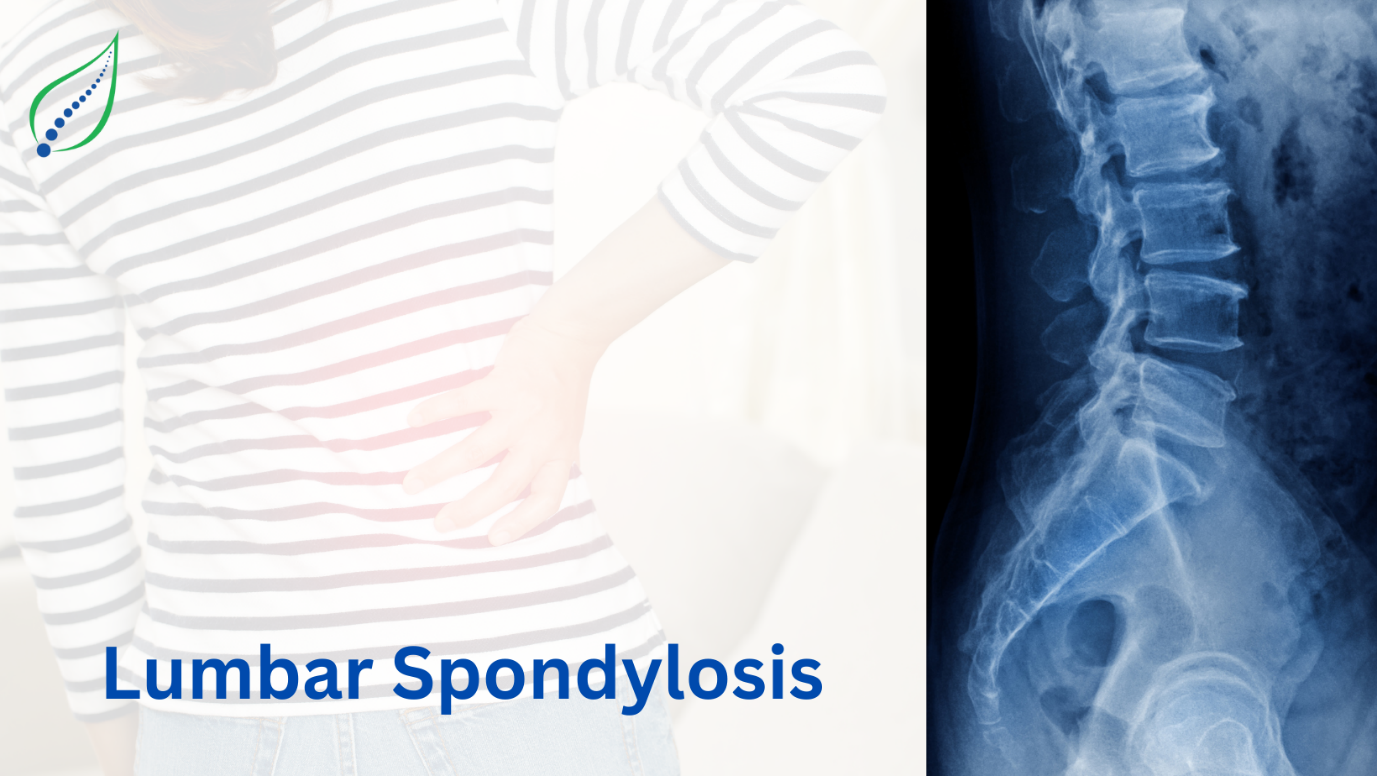Lumbar Spondylosis
Lumbar Spondylosis, also known as spinal osteoarthritis, is a degenerative condition of the spine that primarily affects the lower back (lumbar region). Lumbar Spondylosis is a degenerative condition of the lower spine that affects the vertebrae, discs, and joints.
It is characterized by the wear and tear of the spinal discs, bones, and ligaments, which leads to the development of bone spurs, disc herniation, and spinal stenosis.
Lumbar Spondylosis is often caused by aging, but it can also be caused by trauma, repetitive stress injuries, or genetic factors.
Causes:
Lumbar Spondylosis is primarily caused by the natural wear and tear of the spinal discs, bones and ligaments that occur with aging. However, there are also other factors that can contribute to the development of Lumbar Spondylosis, including:
Trauma: A past injury to the lower back, such as a fall or car accident, can cause damage to the spinal structures and lead to lumbar spondylosis.
Repetitive stress injuries: Jobs or activities that require repetitive bending, twisting, or lifting of the lower back can increase the risk of developing lumbar spondylosis over time.
Genetics: Some people may be more genetically predisposed to developing lumbar spondylosis than others.
Obesity: Excess weight can place additional stress on the lower back and increase the risk of developing lumbar spondylosis.
Smoking: Smoking has been shown to accelerate the natural aging process of the spine, which can contribute to the development of lumbar spondylosis.
Inactivity: Lack of physical activity can weaken the muscles that support the lower back and increase the risk of developing lumbar spondylosis.
Symptoms:
Lumbar Spondylosis can have many symptoms, few of these symptoms are listed below:
- Chronic low back pain
- Low back stiffness
- Decreased range of motion
- Numbness or Tingling in the legs
- Weakness in the legs or feet
- Difficulty walking or standing for long periods
Treatment:
Treatment for lumbar spondylosis depends on the severity of the condition and the symptoms it causes. Here are some possible treatments:
Pain medication: Over-the-counter pain relievers such as acetaminophen or Non-Steroidal Anti-Inflammatory Drugs (NSAIDs) like ibuprofen may help relieve mild to moderate pain. Prescription pain medications may be necessary for more severe pain.
Physical therapy: Physical therapy can help improve range of motion, flexibility, and strength. A physical therapist may also teach you exercises that can help reduce pain and improve posture.
Lumbar back support: Lumbar back support is beneficial for patients suffering from lumbar Spondylosis. It helps to limit excessive spine movement and reduce mechanical forces. It also helps to stabilize and correct spine deformity.
Cryotherapy: Cryotherapy is used to reduce swelling and pain.
Thermotherapy: Thermotherapy is used to promote blood flow, decrease swelling and remove toxins.
Exercise therapy: Exercise therapy includes muscle strengthening, muscle stretching and aerobics exercises. The exercise programs vary in intensity, duration and frequency.
Manual therapy: Manual therapy is hands-on technique that involves spinal manipulation and mobilization. It is used to break the adhesions, align the bones and improve mobility.
Massage therapy: Massage therapy helps to decrease pain and swelling, breaks adhesions and increases blood circulation.
Transcutaneous electrical stimulation (TENS): Transcutaneous electrical stimulation (TENS) gives immediate relief from pain.
Interferential therapy: Interferential therapy is used to decrease pain and inflammation.
Kinesio taping: Kinesio-taping helps to relieve pain in the lower back. It is used to improve range of motion and also to correct bad posture.
Strengthening exercises: Strengthening exercises are done to strengthen back and core muscles which help to support the low back.
Stretching exercises: Stretching exercises are done to improve the flexibility and pain-free range of motion of the back muscles.
Balance exercises: Balance exercises are taught for awareness to show the proper posture of the back while moving during various activities.
McKenzie exercises: McKenzie exercises focus on extension and help to prevent further degeneration of the lumbar spine.
Injections: Transforaminal epidural injections can help reduce inflammation and pain in the affected area.
Lifestyle changes: Making lifestyle changes such as losing weight, quitting smoking, and practicing good posture can help alleviate symptoms of lumbar Spondylosis and prevent further damage.

_1747226427_1751827070.png)
_1744793045_1751827442.png)
_1743751136_1751830603.png)
